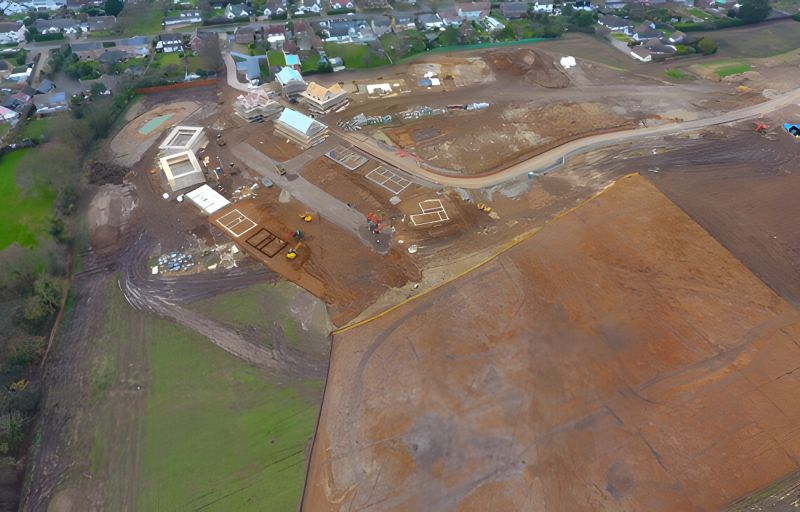| Archaeological Investigations at Brierley Paddocks, West Mersea
The Brierley Paddocks development was on land between Cross Lane and Seaview Avenue. There had to be an
archaeological investigation on the site, and as was expected, there were some interesting find.
In October 2023 Callum Allsop, the Archaeologist on the site, came to tell the people of Mersea
what has been found. He wrote an interim report which is below, but there is still much more work to be
done.
The report has been copied from the ADAS website - to see the original, go to
adas.co.uk/projects/archaeological-investigations-at-brierley-paddocks-west-mersea/
Project background
In 2019, the City & Country Group submitted a planning application for up to 101 new dwellings at Brierley Paddocks, West Mersea (now called Sanderling Reach).
Prior to the application, a desk-based assessment concluded there was a high potential that Roman remains were on-site and that underlying archaeological remains had not been disturbed by previous groundworks here.
Planning was granted on the condition that all archaeological assets within the proposed development area would be safeguarded.
The condition was subsequently altered at the excavation stage when the areas were split into three to facilitate the development.


Surveys undertaken
Geophysical surveys
In March 2019, a geophysical survey to locate and determine buried features was undertaken. This survey identified an area of interest in the southeast area of the development site.
At the same time, archaeologists conducted fieldwalking of the site with a metal detector. The team found medieval pottery and Roman ceramic building materials. The location of these finds correlated with the geophysical survey results.
Trial trenching and excavations
From 2019-2020, two phases of archaeological trial trenching were undertaken across the development area. Of the 37 trial trenches excavated, 147 archaeological features were recorded. In the northern section, there was some evidence of Bronze Age activity with a high-level of Roman activity recorded in the southern section.
Based on the evaluation results, two specific areas were chosen for more thorough archaeological excavation undertaken in 2021 and 2022. A small area to the north to target the Bronze Age activity (Area 1) and a larger area to the south to target the Roman activity (Area 2). The latter was split in two (Area 2a & 2b).
What was found
- A Bronze Age unurned cremation burial and field system in Area 1;
- Nine almost complete ring ditches (footprint of Iron Age roundhouses), along with fragments of Late
- Bronze Age to Early Roman pottery in Area 2a;
- Roman coaxial field systems from the late 1st century to 4th century AD across Area 2;
- Seven graves separated from the field system in Area 2a, some containing grave goods but no human remains;
- A horse burial in Area 2a;
- Postholes and waterlogged pits with evidence of timber structures across Area 2;
- A trumpet brooch and a carved amber figurine in Area 2b.


In total, 30,000 m2 of archaeological investigations were carried out across a four-year period. These identified a definitive small Iron Age settlement present with possible evidence of salt-making from the Late Iron Age to Roman periods. The artefactual evidence also indicates that there was a high-status Roman settlement to the south of the site.

Callum's talk at Mersea Museum October 2023.
|